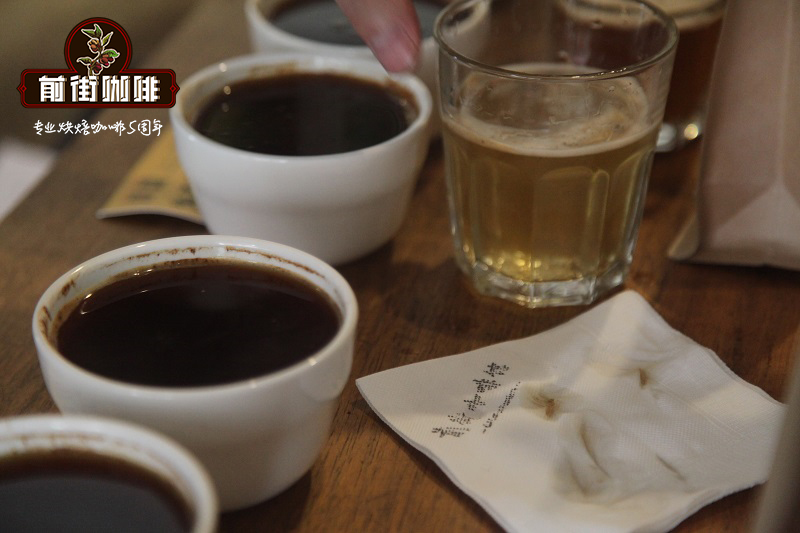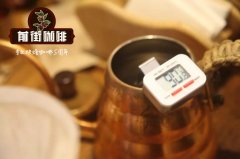Hawaiian Coffee introduction Hawaiian KONA Kona Coffee flavor description

Professional coffee knowledge exchange More coffee bean information Please pay attention to coffee workshop (Weixin Official Accounts cafe_style)
Hawaii
After nearly two centuries of efforts to grow coffee in Hawaii, the term Kona has become almost synonymous with "quality." Hawaii has a geographical advantage for growing coffee, but historically, coffee has been grown on a bumpy road since coffee trees were first introduced to the island in 1825. Even today, factors beyond human control often have an impact on harvests in coffee growing areas as successful as Hawaii.
Hawaii coffee production:
Hawaii (Hawaii) across the latitude of 19 to 22 degrees, south of the Tropic of Cancer, by the trade winds of the Hawaiian Islands, is a natural perfect coffee growing area, the fiftieth state of the United States, 2400 miles away from the West Coast of the United States, is the only coffee producing state in the United States, Hawaii coffee is also internationally renowned, known as one of the best coffee in the world.
Most coffee is grown on the slopes of Mauna Loa. Mauna Loa was originally a volcano located in the western part of the Kona region of Hawaii. The length of the coffee producing area is about 30 kilometers, and its cultivation area is mainly concentrated in the north and south of the area. Coffee trees are grown in relatively inhospitable areas, but the soil is fertile and contains volcanic ash.
Hawaii's most famous coffee bean and coffee growing area is Kona, an area located in the southwest of the Big Island, 20 miles long and 2 miles wide, covering the Hualalai and Mauna Loa slopes. Only coffee beans grown in this area and subject to the most stringent certification standards can be sold under the brand name "Kona". Today, about 100 farms produce coffee beans that meet the above standards, and more and more farms are expected to follow in the future.
Although Hawaii is often affected by tornadoes, the climate conditions are ideal for coffee growing. There was plenty of rain and sunshine, and no frost. There is also a strange natural phenomenon called free shade. On most days, around 2 p.m., white clouds appear in the sky, providing the coffee trees with the shade they need. In fact, it is these natural conditions that allow Kona to produce more Arabica coffee than any other plantation in the world, and to maintain a consistently high quality. For example, coffee yields 560- 900 kg/ha in Latin America and 2240 kg/ha in Kona. Only about 1400 hectares produce Kona coffee.
Coffee trees are grown for commercial purposes on all islands in Hawaii, but at present, the number of coffee plantations on the Big Island is the largest, with about 650 plantations. However, these coffee plantations are relatively small, totaling less than 2000 acres of plantation forest land. On Maui, Molokai, Oahu and Kauai, only 25 coffee plantations are in operation, but the coffee plantations in these places are much larger than those on the Big Island. The total yield is also more than three times greater than that of Big Island coffee plantations. Amazingly, Kauai has the largest coffee growing area of any island, at over 4000 acres, managed by the same operator;Molokai has only 550 acres, and Maui and Oahu have even fewer. Most Hawaiian coffee farmers today still harvest only fresh cherries to sell, but in recent years more and more people have dedicated themselves to adding value to their coffee bean products, so most of them are post-processing, drying, grinding and roasting their own coffee beans.
Hawaiian coffee features:
Kona coffee beans from Hawaii have the most perfect appearance-they are unusually full and shiny. The coffee has a rich aroma with cinnamon spice notes and a balanced acidity.
The best Kona coffees are divided into three categories: ExtraFancy, Fancy and NumberOne. This third-class coffee is produced both on the estate and under natural conditions. Most coffees on the market that call themselves Kona contain less than 5% real Hawaiian Kona coffee. Another good Hawaiian coffee can be found in the United States-Kai Farms. Real kona coffee is a real gem and not easy to find.
Flavor: Smooth, rich and nutty
Recommended baking method: light to medium baking
★★★: Excellent
Hawaiian Coffee Market:
Hawaiian coffee is the only top-grade coffee produced in the 50 states, and the United States is naturally its largest market. Hawaii coffee farmers set very strict coffee quality standards, and will be updated once a year, in all coffee producers, Hawaii coffee industry management is among the strictest, pay the highest labor costs, with the best investment level.
Kona coffee has always been grown using the family farming model. At first, only men were allowed to work in coffee gardens, but later women joined in. Hawaiian family production was more dependent on family effort than on hiring workers, so it was normal for Hawaiian families to have eight or nine children. Since then, new immigrants from the Philippines, the United States and Europe have come to Hawaii to engage in coffee farming. Over time, Hawaii has formed a social atmosphere centered on family culture and easy to absorb foreign culture, which has become a major feature of Hawaii. The harvest season for Kona coffee begins in late August and lasts until January, when farmers harvest the ripe fruit in batches and process it to produce beans.
Kona coffee is washed and naturally dried. Hawaii's clean, sweet mountain spring water provides ideal conditions for the washing process, which gives Kona coffee beans a bright, clear appearance and pure, fresh taste. The washed coffee beans are placed on huge plates and dried naturally by the sun.
Hawaiian Kona coffee beans have the most perfect appearance, its fruit is unusually full, and shiny, is the world's most beautiful coffee beans. Kona coffee tastes fresh, crisp, medium-bodied, slightly sour, with a rich aroma and a long finish. The overall taste of Kona coffee is mild because it is not as mellow as Indonesian coffee, not as strong as African coffee, and not as rough as Central and South American coffee. Kona coffee has a blend of wine, fruit and spice aromas that are as charming as the colorful colors of volcanic islands and have the same long finish.
Related recommendations: Hawaii Kona Kona Coffee Introduction Hawaii Kona Coffee How to brew
Important Notice :
前街咖啡 FrontStreet Coffee has moved to new addredd:
FrontStreet Coffee Address: 315,Donghua East Road,GuangZhou
Tel:020 38364473
- Prev

Variety Identification and Flavor description of different Bourbon Coffee
Professional coffee knowledge exchange more coffee bean information please follow the coffee workshop (Wechat official account cafe_style) early (coffee prehistoric) iron truck transplanted to Yemen after the mutation, the bean shape from thin to round. It was named bourbon in 1715 after France transplanted round beans from Yemeni mocha to the island of Bourbon on the east coast of Africa (renamed Reunion after the French Revolution). Bourbon round bean
- Next

Coffee Queen Hawaiian Coffee producing area Coffee Bean grading introduction to how to brew Hawaiian Coffee
Professional coffee knowledge exchange more coffee bean information please pay attention to the coffee workshop (Wechat official account cafe_style) 01 | Preface Hawaii is the only coffee producing area in developed countries, although the elevation here is not high, but due to the special island climate, the quality of the coffee produced here is not low. Coffee was first made in the time of King Kamehameha, the first West.
Related
- Detailed explanation of Jadeite planting Land in Panamanian Jadeite Manor introduction to the grading system of Jadeite competitive bidding, Red bid, Green bid and Rose Summer
- Story of Coffee planting in Brenka region of Costa Rica Stonehenge Manor anaerobic heavy honey treatment of flavor mouth
- What's on the barrel of Blue Mountain Coffee beans?
- Can American coffee also pull flowers? How to use hot American style to pull out a good-looking pattern?
- Can you make a cold extract with coffee beans? What is the right proportion for cold-extracted coffee formula?
- Indonesian PWN Gold Mandrine Coffee Origin Features Flavor How to Chong? Mandolin coffee is American.
- A brief introduction to the flavor characteristics of Brazilian yellow bourbon coffee beans
- What is the effect of different water quality on the flavor of cold-extracted coffee? What kind of water is best for brewing coffee?
- Why do you think of Rose Summer whenever you mention Panamanian coffee?
- Introduction to the characteristics of authentic blue mountain coffee bean producing areas? What is the CIB Coffee Authority in Jamaica?

